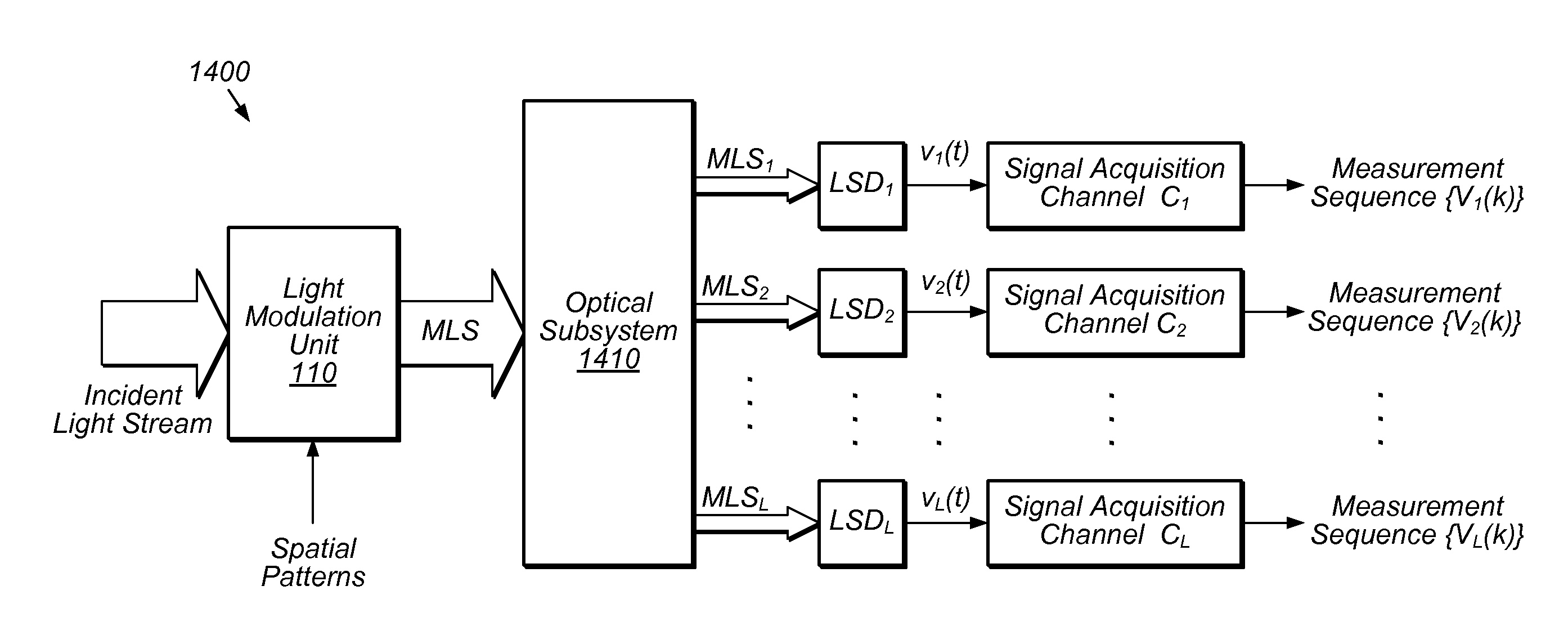User Control of the Visual Performance of a Compressive Imaging System
a compression imaging and user-controlled technology, applied in the field of compressive imaging, can solve the problems of overwhelming data volume, large number of samples generated, and mathematical complexity of the reconstruction algorithm used to reconstruct the image sequence, and achieve the effect of intuitively learning how to operate the user interface simply
- Summary
- Abstract
- Description
- Claims
- Application Information
AI Technical Summary
Benefits of technology
Problems solved by technology
Method used
Image
Examples
Embodiment Construction
[0067]Terminology
[0068]A memory medium is a non-transitory medium configured for the storage and retrieval of information. Examples of memory media include: various kinds of semiconductor-based memory such as RAM and ROM; various kinds of magnetic media such as magnetic disk, tape, strip and film; various kinds of optical media such as CD-ROM and DVD-ROM; various media based on the storage of electrical charge and / or any of a wide variety of other physical quantities; media fabricated using various lithographic techniques; etc. The term “memory medium” includes within its scope of meaning the possibility that a given memory medium might be a union of two or more memory media that reside at different locations, e.g., on different chips in a system or on different computers in a network.
[0069]A computer-readable memory medium may be configured so that it stores program instructions and / or data, where the program instructions, if executed by a computer system, cause the computer system...
PUM
 Login to View More
Login to View More Abstract
Description
Claims
Application Information
 Login to View More
Login to View More - R&D
- Intellectual Property
- Life Sciences
- Materials
- Tech Scout
- Unparalleled Data Quality
- Higher Quality Content
- 60% Fewer Hallucinations
Browse by: Latest US Patents, China's latest patents, Technical Efficacy Thesaurus, Application Domain, Technology Topic, Popular Technical Reports.
© 2025 PatSnap. All rights reserved.Legal|Privacy policy|Modern Slavery Act Transparency Statement|Sitemap|About US| Contact US: help@patsnap.com



